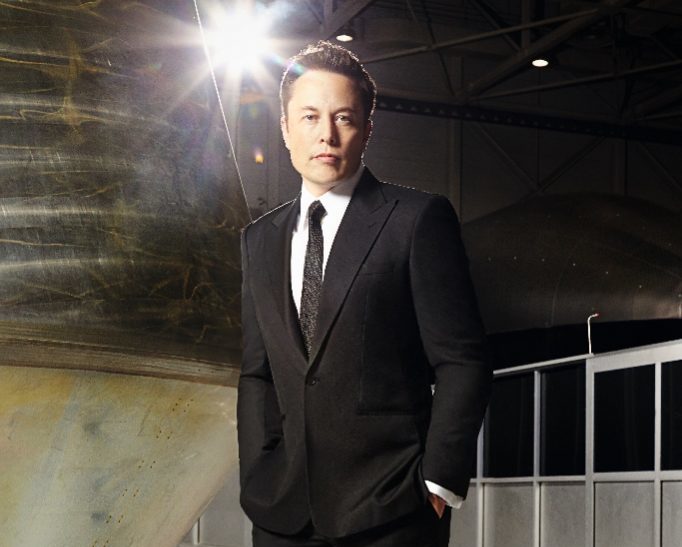You have to be a rare kind of an entrepreneur to believe you can build a city on Mars; South African-born Elon Musk wants to do this. Musk has an extraordinary habit of making fortunes out of dreams. At 43 years old – 26 years after he left Pretoria Boys High School (PBHS) – the $9.4-billion inventor, according to FORBES, is the 47th richest man in the United States (US).

“I’d like to go to Mars. I suppose it depends on how old I am when I get there. If I’m quite old then maybe I don’t come back. If I’m young enough I would come back. I’d like to see what my kids look like when they grow up. But it’s not about me going to Mars. We’re developing new technologies to enable a large number of people to go to Mars and be able to develop a self-sustaining city on Mars,” says Musk.
Musk is no stranger to innovation. He is the inventor who built a rocket that can go backwards. He created the world’s first electric sports car and is the brainchild of the Hyperloop, a railway that has capsules floating on a cushion of air through a 615-kilometer tube from Los Angeles to San Fransciso in 30 minutes.
He is also the founder of PayPal, which changed online shopping forever, and Zip2, the web software maker company that banked Musk a cool $22 million when he sold it in 1999 to Compaq Computer.
Loading...
Musk, one of TIME’s 2013 100 most influential people in the world, was born in Pretoria in 1971. From the age of 12, Musk taught himself programming and sold a computer code for a video game for $500.
The tycoon, whose flamboyant image is said to have inspired Tony Stark’s Iron Man character, led the calmer life behind his school desk at PBHS.
“My impression is that Elon kept to himself and was relatively quiet and reserved. I believe he was involved with the computer club at school, but otherwise was not really visible in mainstream activities,” says Gavin Ehlers who was head boy at PBHS in 1988, the year Musk finished school.
Ehlers is the co-founder of Expertron Group (Pty) Ltd, a South African company specializing in mobile IT system development.
Not surprisingly, Musk graduated with distinctions in Physical Science and Computer Science, recalls Bill Schroder, who was headmaster of the school from 1990 to 2009. Musk then emigrated to Canada, in part to avoid conscription in the South African military service, and furthered his studies in physics before taking the plunge as an entrepreneur.
These days, Musk is more about the future than his past. SpaceX, Musk’s rocket building company, has a $1.6 billion contract with NASA to resupply the International Space Station. In the entrance of its reception, in Los Angeles, hangs two pictures of Mars; one as the red planet, the other as a colonized Mars, complete with oceans, forests and green mountains. It’s a sign of dreams to come.
“Where I think [space exploration] makes sense is to use a commercial organization like SpaceX to do rocket transport. Traditionally, it has been done by NASA in the US but it’s more sensible to be done by a private enterprise because there are a lot of flights. Three quarters of our launches are actually for commercial satellites here at SpaceX – it’s about one quarter for NASA,” he says.
Musk believes that the future of space travel will be done through public and private partnerships.
“A lot of people think it’s a competition, but NASA is our biggest customer. What NASA has decided to do for the most part is get out of the rocket game and focus on the payloads and scientific experiments,” he says.
It has not always been smooth sailing for Musk. Tesla Motors, his electric car company, survived bankruptcy in Christmas of 2008.
“We tried to keep a car company start-up alive during the biggest recession since the great depression, all while General Motors and Chrysler were going bankrupt. We had a new, unproven technology – it was excruciatingly difficult. So I had to put down every bit of money that I had, with nothing left, just to keep the doors open,” he says.
Musk managed to pull through some financers at 6PM, an hour before investors went on holiday. It was a tense hour as he escaped bankruptcy by a whisker.
“We had to lay off a bunch of people just to reduce our cash burn, which was a difficult thing. The media was crapping on us every day, multiple bloggers were maintaining a ‘Tesla death watch’,” he says.
Tesla cars can be found across Europe and China. The Model S sedan can be bought for around $63,000 in the US, after rebates. Musk paid the full price for one of his own.
“Yes, full price, not even a discount. It’s actually important that I do it so that if a big A-list celebrity comes and says ‘hey, you gotta give me a discount because if somebody sees me driving your car it’ll be a big promotion’ I can tell them ‘look, I don’t even give myself a discount, nobody gets a discount.’ A lot of times, it’s all about ego, so long as people know that nobody gets a discount, they’re okay.”
It looks like Musk’s plan is all about cars, rockets and not giving a discount.
With special thanks to the Pretoria Boys High School Old Boys Association for contacting Musk’s former colleagues.
Loading...
